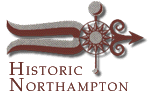
Hair Jewelry Exhibit Howes Brothers Photographs Pro Brush Ad Strategy 
|


A wide array of fabrics existed during the antebellum era and influenced both the fashion and the people of the era. Fabrics came in a range of prices depending on fiber, quality, and surface decoration. Certain fabrics were made to fit social occasions that ranged from every day activities to fancy social events. The type of fabric people wore varied according to their social class. Thus style, money, and type of social occasion affected the fabrics used during the antebellum era.
Cotton was used to make many of the fabrics of the antebellum era, from muslin and cambric to calico and velvet. Prior to the Industrial Revolution the printed cottons, also known as calicoes, were expensive and signs of high social status, but with the Industrial Revolution, which included the invention of the cotton gin and the development of water and steam-powered factories, printed cottons became cheaper and available to most people. Calico became widely used in everyday dresses. Gingham was another fabric generally employed in clothes for everyday wear. Gingham usually means a checked pattern, but gingham could describe several woven pattern in different types of fabrics including cotton, linen and wool, and occasionally even silk. Silk came in many different weaves including satin, but throughout the 1820s to the 1850s and beyond, it was one of the more expensive fabrics and was used in elegant dress clothes similar to today.
Cashmere, from the Kashmir goat of India, was one of the most sought after and expensive fabrics of the antebellum era. Cashmere shawls were especially popular, but not affordable for everyone. Merino, a type of soft wool, was often used to emulate the cashmere shawls. Merino was one of the finest types of wool and it was among the fabrics used for dressier clothing. Another type of lightweight wool, though not as fine as merino, was delaine. Delaine was a printed fabric with a silk warp and a wool weft that was commonly used during the 1850s for dresses for a number of occasions.
Velvet varied both in its cost and its use. Cotton velvet was cheaper than silk velvet. Fancy dresses and some cloaks were made out of velvet and velvet was also used as decorative trimming in both dresses and accessories such as bonnets. Crepe, or crape, a crinkled fabric could be made from cotton, wool or silk. The crinkled effect was used to make the fabric look dull, not shiny. The silk was often used in mourning wear.
back to virtual exhibits | back to Ladies' Antebellum Clothing
Contents Historic Northampton.